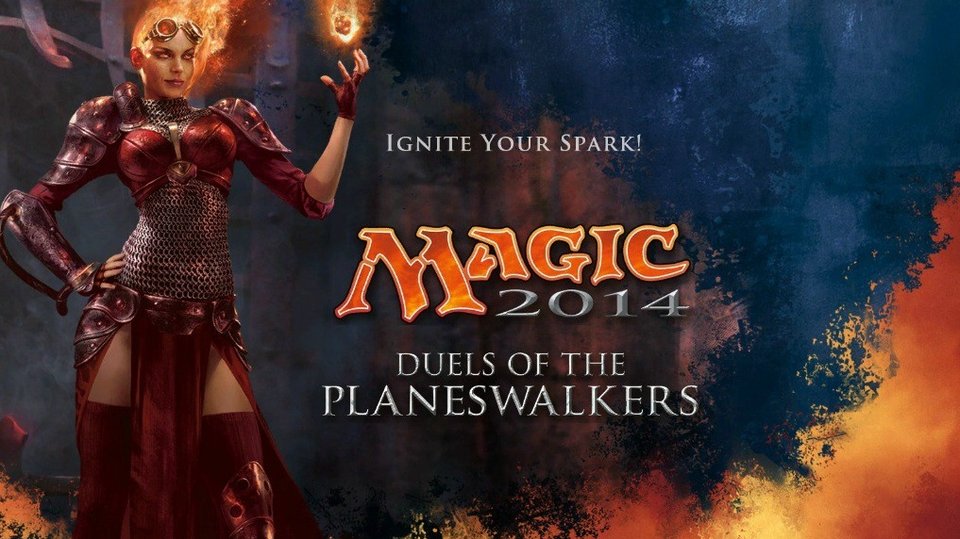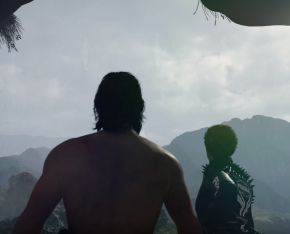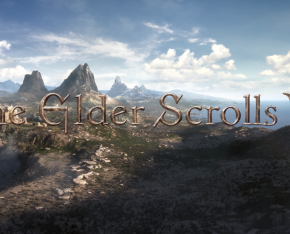By Brad Sewell on July 21, 2013 at 11:56pm
“Duels of the Planeswalkers 2014” is the newest installment of Wizards of the Coast’s annual series based on the “Magic: The Gathering” trading card game.
The gameplay is familiar to anyone who has played previous games in the series. The game does a fantastic job of seamlessly enforcing “Magic’s” many rules, maintaining spells on the stack, and keeping track of effects that alter your creatures and permanents. If you’re playing a multi-colored deck, you are also given the option of which color lands to tap in order to meet requirements, although the default tapping is something you will need to keep an eye on if you find yourself wanting to cast a series of spells with highly-restrictive mana costs.
New to “Duels 2014” is the ability to create custom sealed decks of 40 cards. The game initially gives you two Sealed Play slots, and additional slots can be purchased for $1.99 USD to a maximum of five slots. Upon beginning the singleplayer sealed campaign, the game gives you six booster packs of 14 cards (physical booster packs have 15 cards, but “Duels” excludes the usual land card, instead giving you the option to adjust lands manually). The sealed campaign then contains six matches against NPC opponents, with the first, third, and fifth matches granting additional booster packs to supplement your deck. Playing a game with 40 cards generally makes for a faster experience, although cards such as the Elixir of Immortality can drag a game out much longer.
Players may feel that Sealed Play mode is rather restricted, with booster packs containing cards from a list of 151 (none of which are Legendary), which, excluding lands, is smaller than the smallest expansion in the trading card game. With duplicate cards, you may find yourself sighing at duplicates of the same lackluster creatures. Yes, I’m looking at you, Pillarfield Ox.
Sealed Play deck construction ranks the quality of your decks on a 1-10 scale, ranging from Weak to Strong. Every deck I made is classed as 5/10 Average. I suppose I should feel some sense of shame at that, but they were all able to complete the campaign, and I am particularly proud of my red/white deck. For some reason, the rating system seems to possess a blind hatred of multicolored decks and anything artifact.
“Duels 2014” includes a story that pits you as a fledgling Planeswalker assisting Chandra as she crosses the planes of Innistrad, Zendikar, Shandalar, Ravnica, and Kaldheim. On the first four planes, you will first face three “encounters,” which are preconfigured decks that play the same cards in the same order each time. Although predictable, encounters on the later planes include additional victory requirements. For instance, the Jailbreak encounter in the Chandalar plane gives you nine turns to achieve victory against an opponent playing with a control deck. The Weather the Storm encounter on the same plane begins with the opponent having already played Aether Storm, an enchantment that prevents the casting of creature spells. The enchantment can be destroyed by paying four life, but the opponent will play several copies as it chips away at your life total and ties up the creatures you do manage to play.
Each chapter ends with you facing off against an NPC opponent. These incorporate strategy into their playstyle, but they are still not overwhelmingly difficult. The opponent Enter the Draconmancer at the end of the Alara plane (green/black/red with Devour and token generation) feels woefully underpowered, and I found myself unlocking cards against that deck more often than not. Defeating an opponent awards you their deck and gives you the option to duel one of five planeswalkers, which do seem to be more difficult but are still not insurmountable.
Each deck you unlock has 60 cards, and each duel you win against an NPC or live opponent online unlocks one of 30 additional cards. Also new to “Duels 2014” is the ability to manually adjust land, which was something that irritated me in previous versions of the game, as the “Duels” series favors more land cards than I think most players are comfortable with. These unlocked cards provide improvements over your original 60 and are blessedly oxen-free. While you are allowed some flexibility with your deck construction by unlocking cards, you still cannot mix and match cards between decks.
The music in “Duels 2014” is a vast improvement over “2013’s” minimalist soundtrack. Graphically, “2014” is similar to its predecessors, but the animations feel more fluid in this one, and there are more of them. Cards such as Day of Judgment and All Is Dust are particularly fun to watch in action.
Assuming that “Duels 2014” will follow the same model as previous games, we should expect expansion decks to be released over the next year with packages ranging from $0.99 to $4.99. As someone who plays two-color decks most often, I hope to see more of those added, as the base game only includes a single two-color: the blue/black unlocked at the end of the Ravnica chapter. There are currently 10 decks (seven of which are mono-colored, the blue/black deck I mentioned, the green/red/black Devour deck, and a green/white/red sliver deck). I must say that my favorite deck so far has been the schadenfreude-inducing mono-green Eldrazi deck.
But I may be an evil bastard.
“Duels 2014” features countless of hours of gameplay, a host of new cards to explore, and many opponents to face online. It is available on Windows, Steam, PlayStation 3, Xbox 360, and iOS or Android mobile devices for $9.99. Veterans of the “Magic” franchise may be more at home with “Magic: The Gathering Online,” and there is a lot to be said for playing the physical card game, but “Duels 2014” fills its own niche and is probably hands-down the best way to learn the basics of the game. I’ll keep hoping for more deck customization, though.









